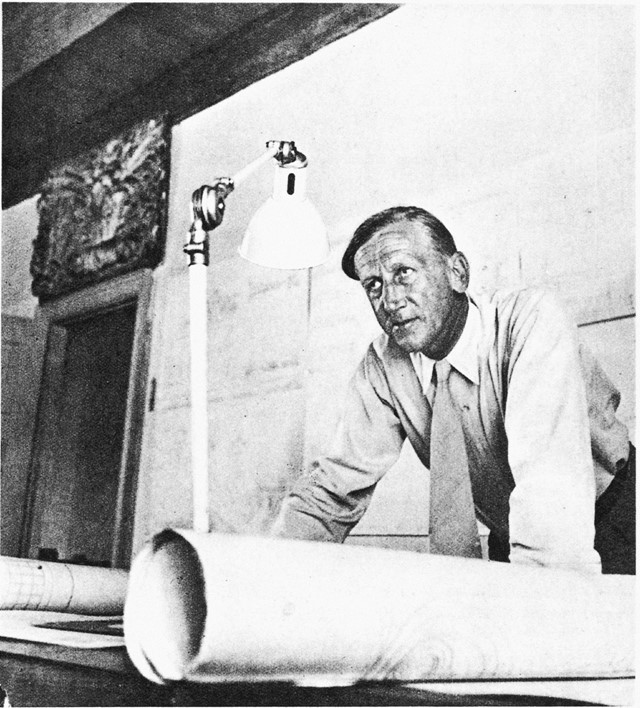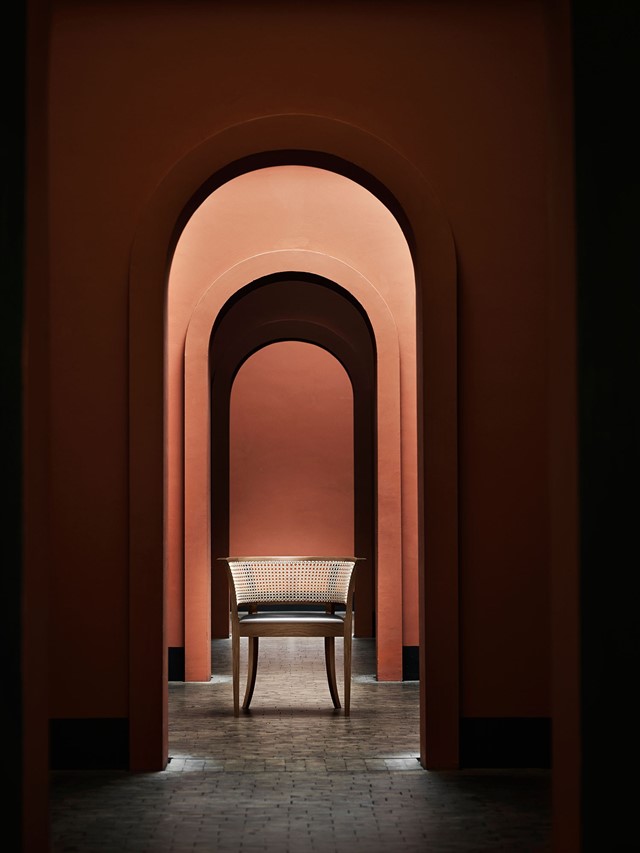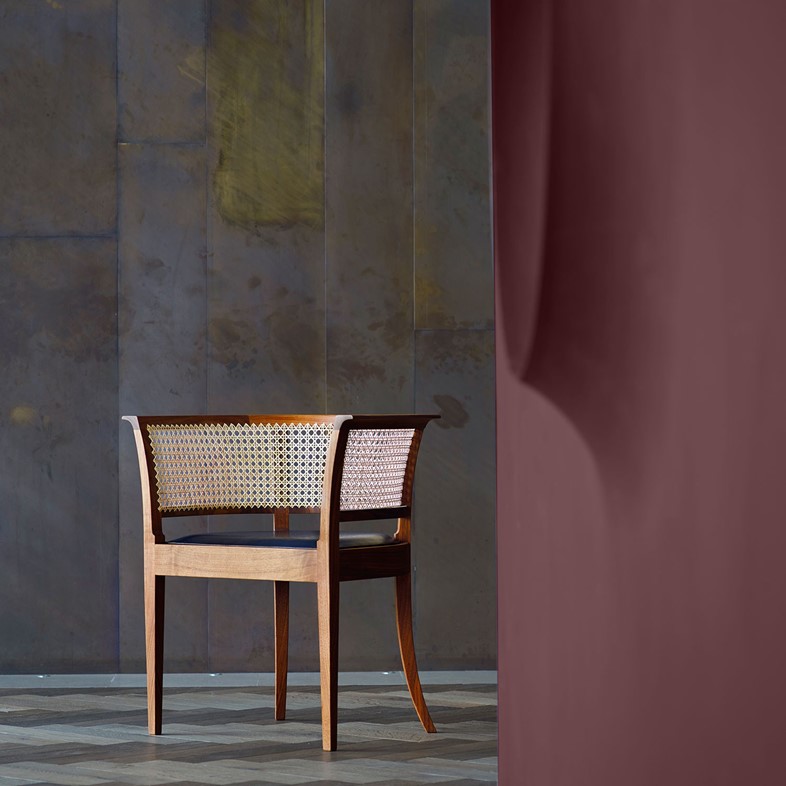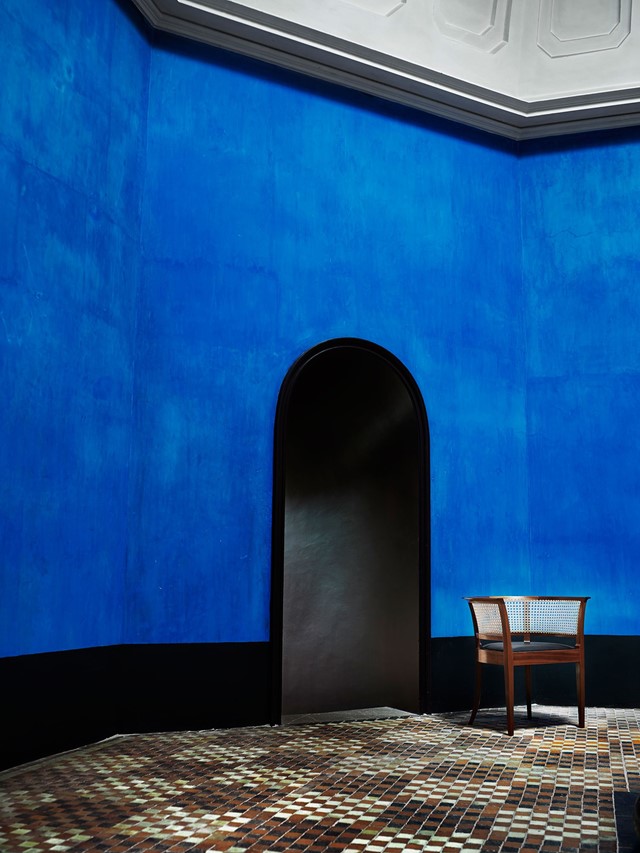The story behind Kaare Klint’s most famous piece of furniture – and one of the first classics of Danish modern design
In 1914, the architect Carl Petersen hired Kaare Klint to help him design furniture for his Faaborg Museum on the island of Funen in Denmark. The collaboration resulted in the Faaborg chair – a design that would later be regarded as the first Danish modern design classic.
Featuring a rounded backrest and curved back legs, the Faaborg chair takes its cues from classical Greek and Roman design. What sets it apart from its predecessors, however, is its unadorned form; in stark contrast to the decorative Neoclassical aesthetic of its day, it features no ornamentation or superfluous detail at all.
The Faaborg chair melds the beauty of traditional craftsmanship with the principles of Functionalist design: its simple, uncomplicated shapes are based on a knowledge of materials and handcrafted furniture, while its stability and proportions were achieved through mathematical principles and geometry.

Presented to the public at the inauguration of the Faaborg Museum in 1915, for which it was made in an edition of 18 and placed in the museum’s main galleries, the chair was an integral part of the museum’s design. It was designed to be light and portable so that museum guests could easily place it before artworks.
With its simple forms, functional design and use of natural materials, the Faaborg chair is credited with bringing in a new era in Danish design, marking a shift away from a decorative aesthetic to more utilitarian forms. It has influenced generations of Danish designers and has come to embody the Danish modern aesthetic. The DNA of the Danish modern movement that became internationally known in the 1950s can be traced back to Faaborg chair.
Knud Erik Hansen, the CEO of Carl Hansen, the Danish furniture company who manufactures the chair, says that Klint – who was just 26 when he co-designed it – was “way ahead of his time... He has created something that is reminiscent of the past and modern at the same time.”

Klint’s functional approach, which involved extensive research into how to tailor furniture proportions to the human body, was carried on by the students he taught at the department of furniture design at the Royal Danish Academy of Fine Arts – including the likes of Hans J. Wegner, Mogens Koch, Arne Jacobsen and Poul Kjaerholm, who would become important furniture designers in Denmark during the 1950s and 1960s.
In keeping with Klint’s design philosophy, the Faaborg chair’s rounded backrest features a panel of rattan woven in a traditional pattern, which was chosen for its ability to bend inwards to support the sitter’s back. It originally featured a rattan seat so that the museum’s patterned floor tiles could be seen through it. For comfort reasons, it was replaced by a fixed seat in the early 1960s.

For generations, the chair was made by hand by Rud Rasmussen, the joinery workshop in Denmark where Klint worked for many years, and which was bought by Carl Hansen in 2011. Today the parts for its frame are cut by machinery, but it is assembled by hand and its rattan panel is woven by a single craftsman, taking 20 hours to produce.
The Faaborg chair is one of the oldest in production today, yet it still looks modern and it has never been more popular, says Hansen. “It has a quiet atmosphere and presence, and it can fit into any style of house you can think of.”
